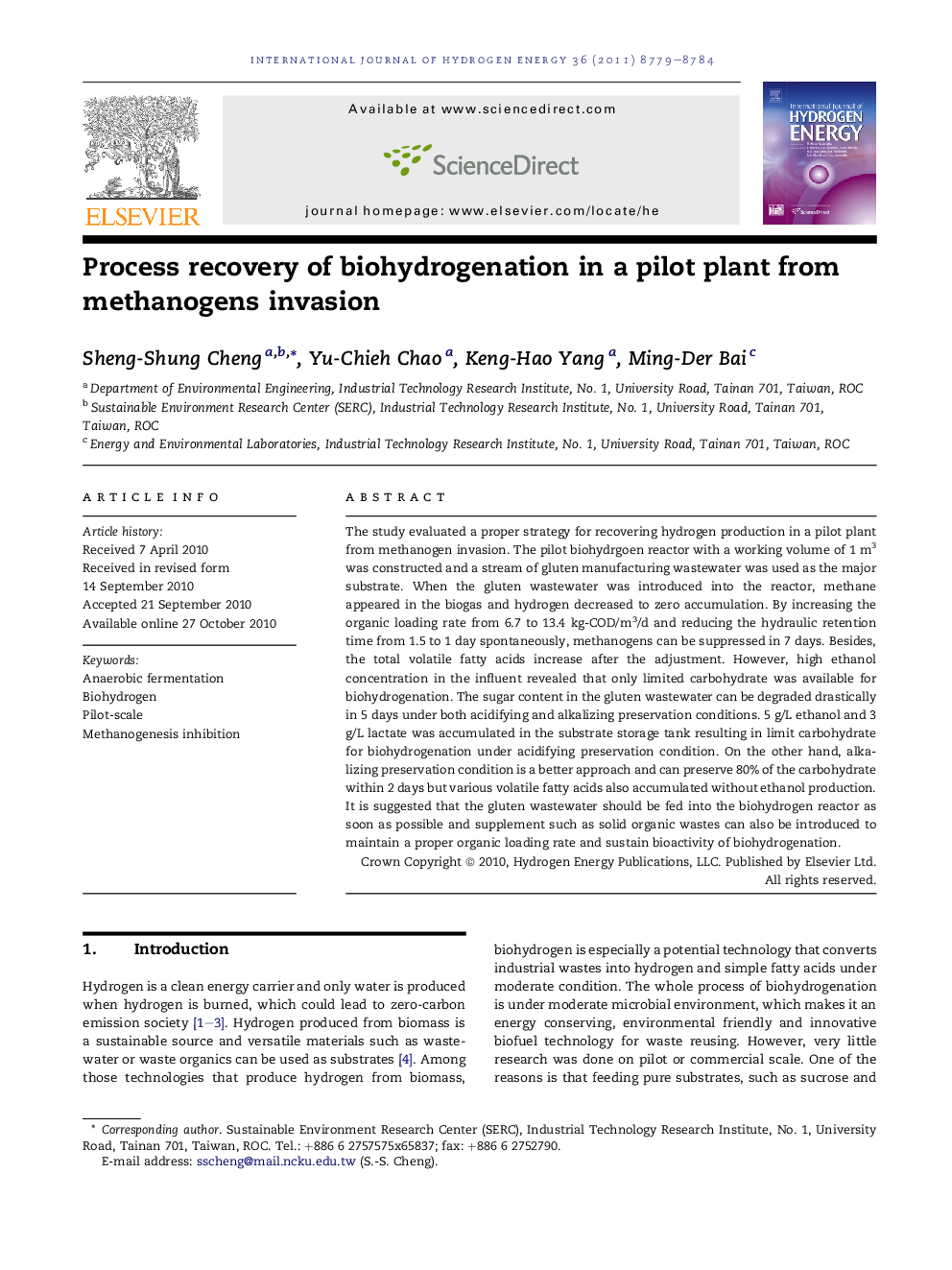| Article ID | Journal | Published Year | Pages | File Type |
|---|---|---|---|---|
| 1279200 | International Journal of Hydrogen Energy | 2011 | 6 Pages |
The study evaluated a proper strategy for recovering hydrogen production in a pilot plant from methanogen invasion. The pilot biohydrgoen reactor with a working volume of 1 m3 was constructed and a stream of gluten manufacturing wastewater was used as the major substrate. When the gluten wastewater was introduced into the reactor, methane appeared in the biogas and hydrogen decreased to zero accumulation. By increasing the organic loading rate from 6.7 to 13.4 kg-COD/m3/d and reducing the hydraulic retention time from 1.5 to 1 day spontaneously, methanogens can be suppressed in 7 days. Besides, the total volatile fatty acids increase after the adjustment. However, high ethanol concentration in the influent revealed that only limited carbohydrate was available for biohydrogenation. The sugar content in the gluten wastewater can be degraded drastically in 5 days under both acidifying and alkalizing preservation conditions. 5 g/L ethanol and 3 g/L lactate was accumulated in the substrate storage tank resulting in limit carbohydrate for biohydrogenation under acidifying preservation condition. On the other hand, alkalizing preservation condition is a better approach and can preserve 80% of the carbohydrate within 2 days but various volatile fatty acids also accumulated without ethanol production. It is suggested that the gluten wastewater should be fed into the biohydrogen reactor as soon as possible and supplement such as solid organic wastes can also be introduced to maintain a proper organic loading rate and sustain bioactivity of biohydrogenation.
